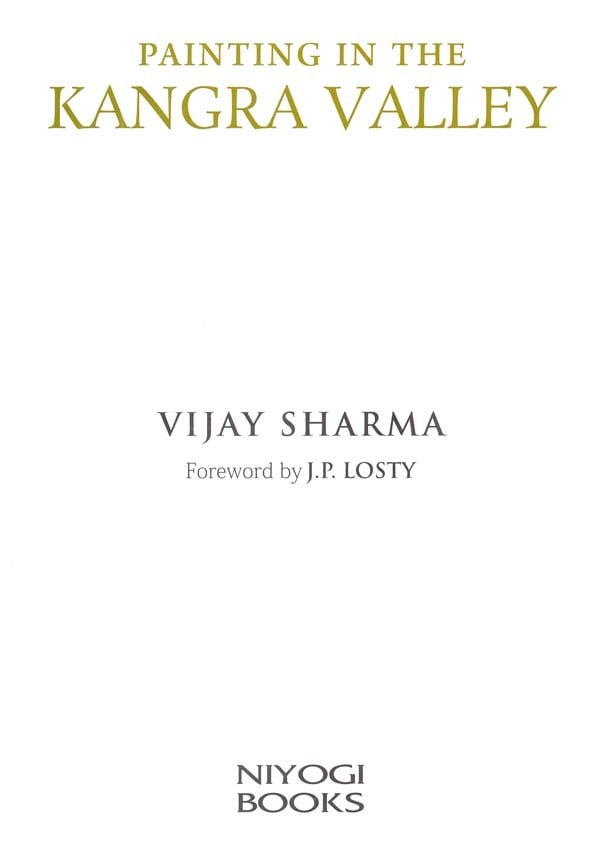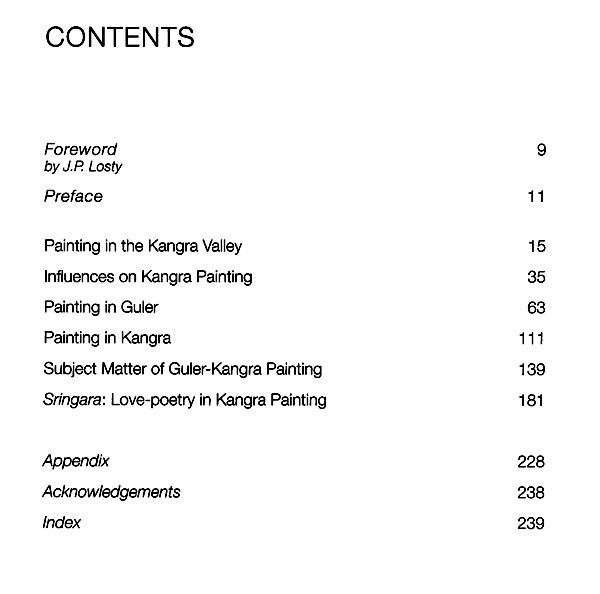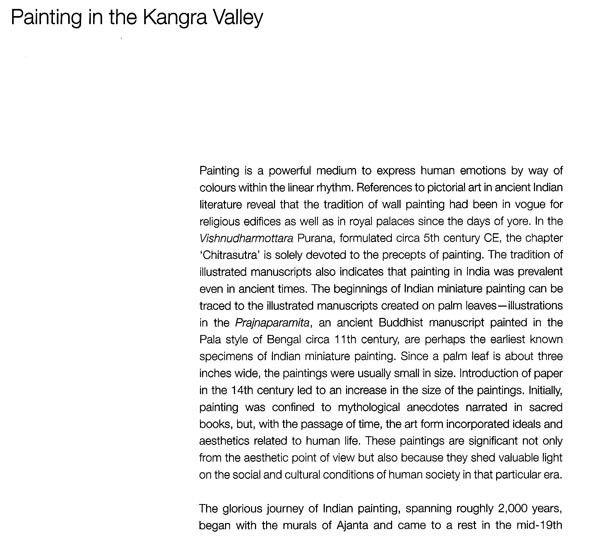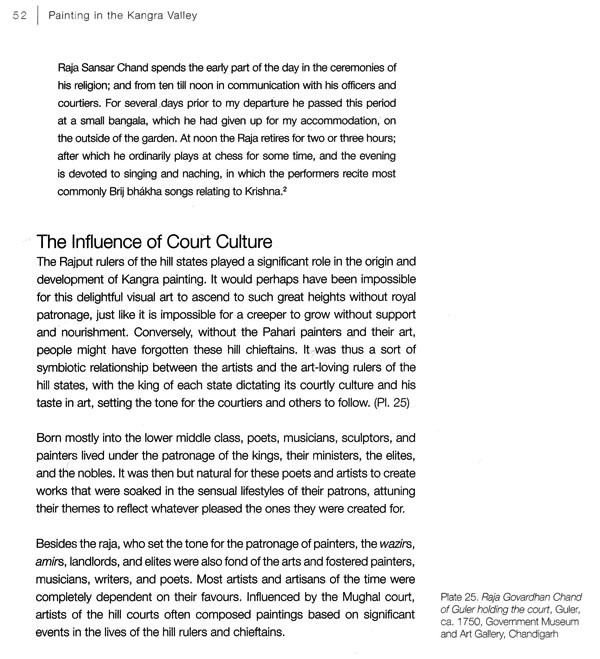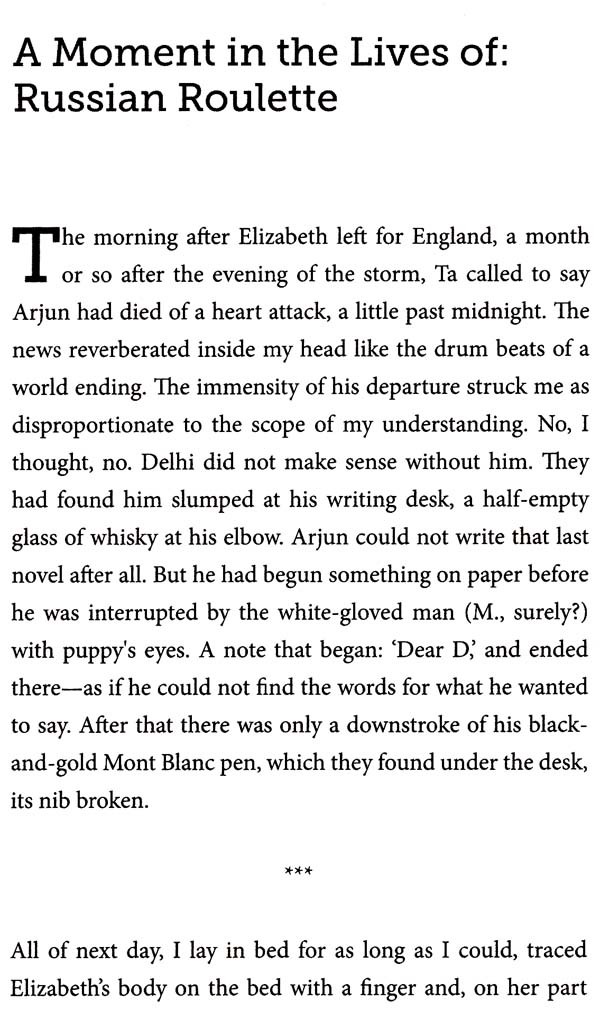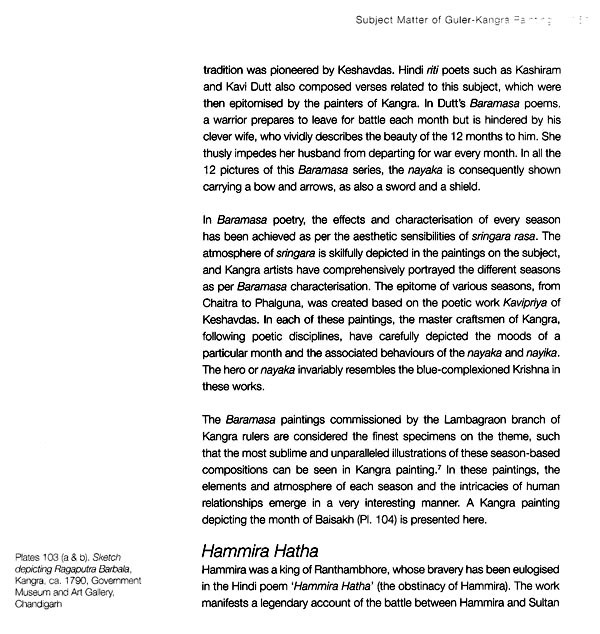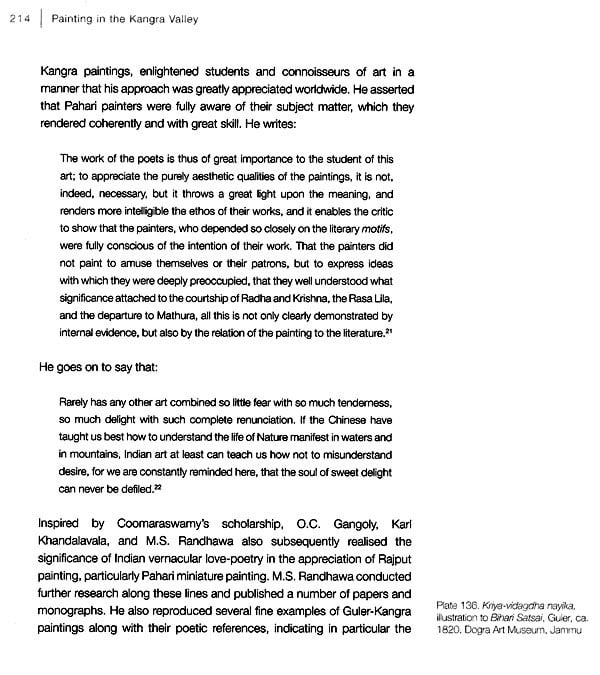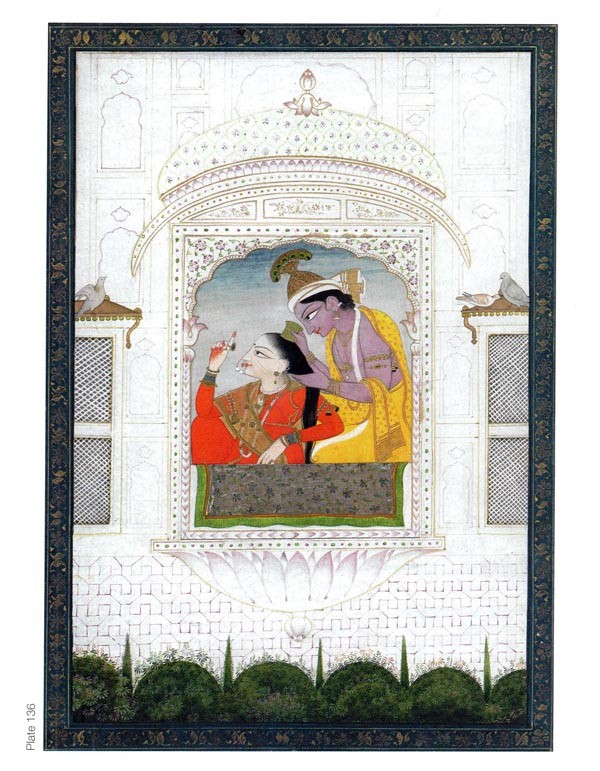
Paintings in the Kangra Valley
Book Specification
| Item Code: | AZE894 |
| Author: | Vijay Sharma |
| Publisher: | NIYOGI BOOKS |
| Language: | ENGLISH |
| Edition: | 2020 |
| ISBN: | 9789389136654 |
| Pages: | 244 (Throughout Color and B/w Illustrations) |
| Cover: | HARDCOVER |
| Other Details | 9.50x9.50 inch |
| Weight | 1.06 kg |
Book Description
The sentiment of love is the main subject of Guler-Kangra paintings. They illustrate the finest specimens of various kinds of nayika described by the Hindi poets of the riti genre. The female figures seen in these paintings are depicted as graceful and beautiful idealisations, handled by the painters with utmost delicacy and tenderness.
Vijay Sharma's analytical approach, based on facts, gives new insights into the origin and development of the Guler school and the marked influence of later Mughal painting on the styles Manaku and Nainsukh. Featuring more than 160 images this book is a significant read for researchers as well S.connoisseurs.
His keen interest in riti genre of Hindi poetry and Indian classical music helps him understand the nuances of Ragamala paintings. He has co-authored several books and research articles, the notable ones being The Temple of Devi Kothi: Love for Pleasure; Vision of an Enlightened King (ed.); Pahari Paintings of an Ancient Romance: The Love Story of Usha-Aniruddha and Painted Words: Kangra Paintings of Matiram's Rasraj. He has also written Kangra ki Chitrankan Parampara (in Hindi).
Vijay Sharma is the recipient of several awards, including National Award of Master Craftsman in Basohli Painting in 1990 and Padma Shri in 2012. At present, he works as Senior Artist in the Bhuri Singh Museum, Chamba, in Himachal Pradesh.
Yet there is more to painting this period than this superficial view, and the author here brings literary knowledge to bear unraveling the poetic background to these idealized images. Such knowledge necessary for the better understanding of these beautiful paintings. The author takes the reader through the development of new painting modes Guler and their spread Kangra and then through the subjects of the paintings and literary and indeed religious background.
All schools Pahari painting are bedeviled by scholarly controversies over artists and their schools and their dates and places of work, and Guler and Kangra are no exception. Not all agree with the author's interpretation of how precisely Mughal painting influenced Manaku and Nainsukh Guler, or where and for how long they and their six sons worked or when and how the focus of artistic activity shifted from Guler to Kangra. Yet whenever and wherever they were produced, the paintings from this group of artists and then their sons and grandsons are some of the most wonderful in the whole range of Indian art, and Vijay Sharma's analysis will help all to better understanding of them.
personal association that significantly bolstered my advancement as an artist was that of Eberhard Fischer, an eminent Swiss scholar and then director of Museum Rietberg. Zurich. accompanied him on several of his exploratory tours in India. Our collaboration later resulted me visiting him in Zurich to study the Rietberg's brilliant collection Pahari miniature paintings.
**Contents and Sample Pages**
